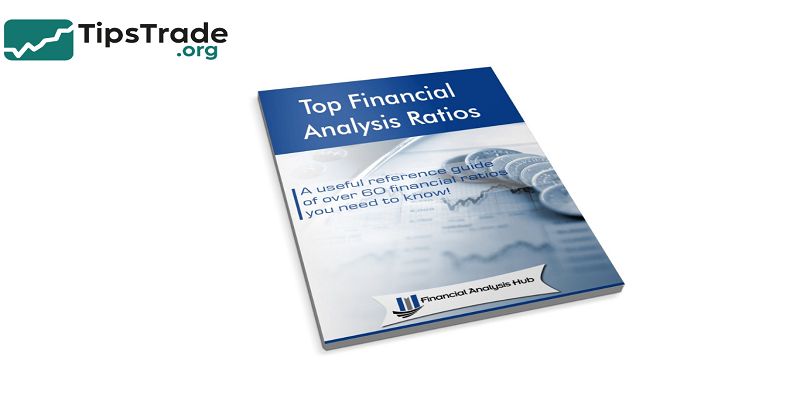Financial ratios books are essential tools for anyone interested in analyzing a company’s financial health. They help investors, analysts, and managers evaluate liquidity, profitability, leverage, and efficiency. However, understanding these ratios correctly requires proper guidance. Books on financial ratios provide structured learning, real-world examples, and exercises that help readers master ratio analysis effectively. Visit tipstrade.org and check out the article below for further information.
Why Learning Financial Ratios Is Essential

Understanding the Role of Financial Ratios
Financial ratios are numerical measures that evaluate relationships between financial statement items. They provide insights into a company’s operational efficiency, profitability, liquidity, and capital structure.
Key ratios include Current Ratio, Debt-to-Equity, ROA, ROE, and Inventory Turnover.
Learning these ratios through well-structured books helps readers interpret the numbers accurately, understand trends, and compare companies within the same industry.
For example, a Debt-to-Equity ratio may appear high but could be standard in capital-intensive industries like manufacturing. Proper education through books ensures that readers do not make hasty or misleading interpretations.
Studies by the Corporate Finance Institute (CFI) show that structured learning improves accuracy in financial analysis by up to 35% among novice analysts.
Common Challenges Without Proper Books
Without reliable resources, many learners struggle to contextualize ratios, misinterpret data, or fail to recognize industry-specific benchmarks.
Beginners often confuse liquidity and solvency ratios, while intermediates may overlook interactions between leverage and profitability.
Books dedicated to financial ratios bridge this knowledge gap by providing step-by-step instructions, examples, and exercises.
They demonstrate how to apply ratios in practical scenarios, such as analyzing a company’s financial statements for investment decisions. Trusted books also highlight common pitfalls, ensuring that readers develop critical thinking alongside technical skills.
Top Financial Ratios Books for Beginners and Professionals

Books for Beginners
Beginners need accessible, clearly structured resources with practical examples. Recommended books include:
- Financial Statements: A Step-by-Step Guide to Understanding and Creating Financial Reports by Thomas Ittelson
- Strengths: Clear explanations, practical examples, easy to follow.
- Weaknesses: Limited advanced analysis; focuses mainly on basics.
- Accounting Made Simple by Mike Piper
- Strengths: Simplified introduction to financial ratios, includes sample exercises.
- Weaknesses: May be too elementary for intermediate users.
- The Accounting Game: Basic Accounting Fresh from the Lemonade Stand by Darrell Mullis
- Strengths: Engaging, using real-life scenarios, interactive learning.
- Weaknesses: Case-based approach might not cover all ratios exhaustively.
These books help beginners build a foundation, understand key ratio categories, and develop confidence before moving to advanced texts.
Advanced Books for Professionals
Advanced learners require books that delve into complex analysis and real-world applications:
- Analysis for Financial Management by Robert Higgins
- Focuses on integrating ratios into corporate finance decision-making.
- Provides case studies and in-depth financial modeling examples.
- Financial Statement Analysis and Security Valuation by Stephen H. Penman
- Emphasizes evaluating company value using financial ratios.
- Uses advanced accounting techniques, suitable for CFA candidates.
- Corporate Finance: Theory and Practice by Aswath Damodaran
- Explores advanced ratio analysis within capital budgeting, risk management, and valuation contexts.
- Strong academic credibility and real-world applications.
These books are ideal for analysts, portfolio managers, and corporate finance professionals seeking deeper understanding of ratio interactions and financial decision-making.
Books Focused on Specific Ratios or Sectors
Some books specialize in particular ratios or industries:
- Liquidity and Solvency Ratios: Financial Ratio Analysis by Martin Fridson
- Profitability Ratios: Financial Analysis with Microsoft Excel by Timothy R. Mayes
- Industry-Specific Books: Banking sector: Bank Management & Financial Services by Peter Rose; Manufacturing: Financial Ratios for Manufacturing Companies
Specialized books allow professionals to focus on ratios most relevant to their sector, ensuring precise benchmarking and analysis.
How to Choose the Right Financial Ratios Books
Consider Your Skill Level
- Beginner, intermediate, or advanced — the book should match your experience. Beginners require clarity and examples; professionals need depth, case studies, and integration with valuation techniques.
Check for Practical Examples
- Books with real-world case studies, exercises, and sample financial statements facilitate learning.
- They provide hands-on experience, reinforcing conceptual understanding.
Author Credibility and Publisher
- Prioritize books by credible authors (finance professors, analysts, or CFA charterholders) and reputable publishers such as Wiley, McGraw-Hill, or CFI.
- Authority ensures accuracy and trustworthiness.
Book Reviews and Ratings
- Check platforms like Amazon, Goodreads, or finance forums to gauge reader satisfaction.
- Consider both qualitative and quantitative reviews to select the most effective resources.
Digital and Alternative Resources

Ebooks and Online Guides
Digital resources provide flexibility and affordability. Many classics are available in PDF or ePub formats, sometimes with supplementary exercises.
Benefits include:
- Instant access
- Lower cost
- Interactive features (search, highlighting)
Reliable sources: Google Books, CFI, or Kindle editions from major publishers.
Video Courses and Webinars
Supplement books with online courses and webinars for applied learning. Platforms include:
- Coursera: Financial Statement Analysis
- Udemy: Mastering Financial Ratios
- CFI online training modules
Video courses often feature guided walkthroughs of ratio calculations, enhancing comprehension and retention.
Conclusion
Financial ratios books are invaluable for analyzing company performance, but mastering them requires structured learning. Books provide essential guidance, practical examples, and nuanced insights for both beginners and professionals. Selecting the right books improves accuracy, builds confidence, and enhances financial decision-making skills.

